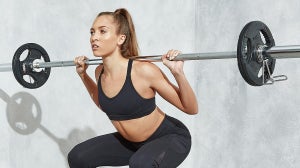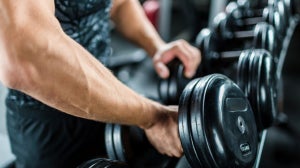
Written by Jack Boardman
What Are The Different Intensity Techniques?
Variety is the spice of life; it’s also a good way to approach weightlifting when you’re looking for serious gains.
Compound lifts and low rep sets are a sure way to engage several muscles with one movement in order to up the amount you lift, develop your strength and achieve muscular hypertrophy (building your muscles). There are, however, other ways that you can achieve this that involve a little ingenuity.
Let’s face it, with all the repetition and time that is required for muscle development, adding some variety and a few new approaches are going to be welcome when you get to a point where you feel you’re advancing as a weightlifter.
Here are some ideas for how you can adjust the way you perform reps to achieve muscular hypertrophy.

Partial Range Reps
You’ll have seen someone well-built in the gym curling or extending an acute range of motion and wondered how it’s fair when you’re lifting from top to bottom and back again. The answer to this is that the partial range – be it a shorter distance from top to middle or middle to bottom, instead of the full range will isolate muscles, providing them with a more focused workout than if you’d completed an entire range of the same movement.
Let’s go with the example or a tricep extension using cables. Usually, your starting position may be at the very top, with the weight plate resting and your arm fully bent – you would then extend and finish with your arm straightened. By beginning this same exercise in the middle with your arm bent at a right angle before extending, you would hone in on the muscle closer to the back of your elbow.
Forced Reps
This is definitely one for the end of your workout session as the aim of forced reps is to work beyond your usual threshold in order to achieve (temporary) muscle failure. It’s advisable that you choose a moderate to low weight and get a lending hand to help bear the weight as you continue to carry out the movement. Another idea for you is to make forced reps part of your plan for the end of the workout week when you’ll be able to fully rest the used muscle the day after. Or, for example, if applying forced reps to your biceps, do it before leg day.

Drop Sets
You’ll have seen this in action at the gym, with someone on the bench press and a partner or two stripping plates from either end of the barbell after each set. These are called drop sets. In other words, for each set you will drop the weight you’re lifting. Start at a heavy weight. These are best done with a gym buddy when working with a bar over you, so as to avoid injury, as your aim will be to work to muscle exhaustion. This same approach can be done with dumbbells and machines, quickly switching for a lighter set of dumbbells or raising the pin a notch to a lighter plate.
A good way to end a session, given that your muscles will be exhausted after.
Rest-Pause
This is an example of making the most of your endurance and capacity to recover so you are the one who will be able to say what you’re capable of. The aim is to get in more sets by lowering the number of reps and using a strategic rest between sets. This is also a good way to ensure solid technique, which can sometimes wane when going for higher reps when your muscles fatigue. Pick a weight that you can lift six reps of and perform sets of three reps, doubling the number of sets you would otherwise do. Take a short rest of 30 seconds between each.
Our articles should be used for informational and educational purposes only and are not intended to be taken as medical advice. If you're concerned, consult a health professional before taking dietary supplements or introducing any major changes to your diet.








